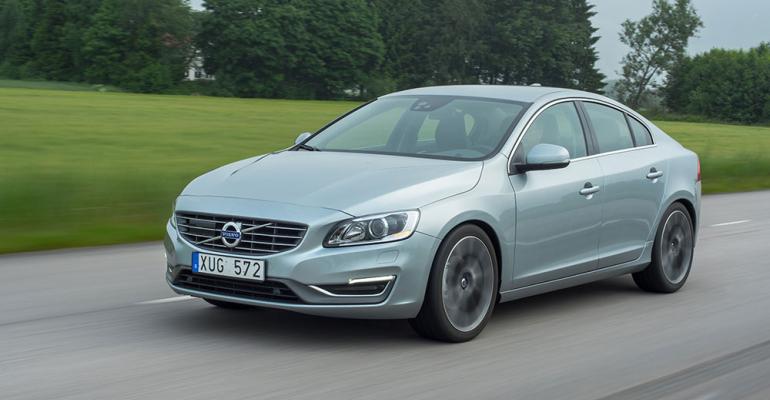LAS VEGAS – Volvo launched its new powertrain initiative in 2007 after word leaked parent company Ford was looking to sell the Swedish brand and talks about regulating carbon-dioxide emissions began to heat up, says a top engineer.
“At that point, we started to think about how we could solve this CO2 problem, and we realized (Ford) was our main supplier of engines and, we needed to have a kind of stand-alone scenario,” Jan-Erik Larsson, director-powertrain engineering, tells WardsAuto.
To reach looming CO2 emissions regulations, Volvo engineers decided to rely solely on an all-new 4-cyl. architecture.
A displacement of 2.0L for both gasoline and diesel engines was targeted, as it was determined it was the ideal size to meet global emissions regulations. Design work for the engine concept phase began in 2008, and the first engine was tested the next year.
While a small-displacement 4-cyl. engine produced low emissions, it fell short in delivering the power and torque Volvo customers expect, Larsson says. “It was then we started to think how we could get a small 4-cyl. to perform like V-8.”
Volvo long has mated turbochargers to inline 6-cyl. engines, but it was determined using twin turbos to make its new 4-cyl. mill produce V-8-like power was not the ideal engineering solution.
The solution? Combining a supercharger with a turbocharger, with the former producing low-end torque and the latter taking over in the high-rpm spectrum.
“The biggest struggle was to make them work together with software, but I think we managed quite well,” Larsson says. “We developed (the software) inside Volvo because this was new technology and not supported by suppliers, so we have a lot of patents regarding control of superchargers and turbos.”
The new engines, dubbed Drive-E Powertrains, with the “E” standing for environmental, will come in two performance levels, one powered by a single turbocharger, the other with the turbo and supercharger paired.
Only gas engines will be offered in the U.S. initially, with the premium T6 4-cyl. engine producing 302 hp and 295 lb.-ft. (400 Nm) of torque, and the lower-level T5 making 240 hp and 258 lb.-ft. (349 Nm). The Drive-E diesels will be offered in European and Asia-Pacific markets. There are no plans to launch them in the U.S., Larsson says.
Other engines will be added later, including T3 and T4, one of which will be a new 3-cyl. under development. In the past, the numeric-T nomenclature was used to indicate the number of cylinders, but Volvo says now it indicates level of performance.
Further down the road, vehicles with electrified rear axles, or mild hybrids, will be added to the mix, as will plug-in electric vehicles. The first PHEV powertrain will debut on the new XC90 CUV next year.
“We are still kind of a small company, so we have to focus on the most important things to get on market,” Larsson says when asked about the delay of the electrified powertrains. “We’ve already finalized the design of the T6 engine so it’s ready to plug it into a vehicle.”
Vehicles with the new powertrains, including the S60 sedan, XC60 CUV and V60 wagon, currently are on sale. As new products roll out they will receive one of the Drive-E engines.
Volvo says significant investments were made in preparation for the new engine family that will be made in Sweden. Overall, $11 billion has been invested on the engines and new scalable vehicle architecture.
“We’re completely done with engines that aren’t 4-cyl. long term,” Larsson says. “In the short term, we will still have I-5 turbos, but we will not introduce the I-5 into the new-vehicle platform. It will be phased out.”





